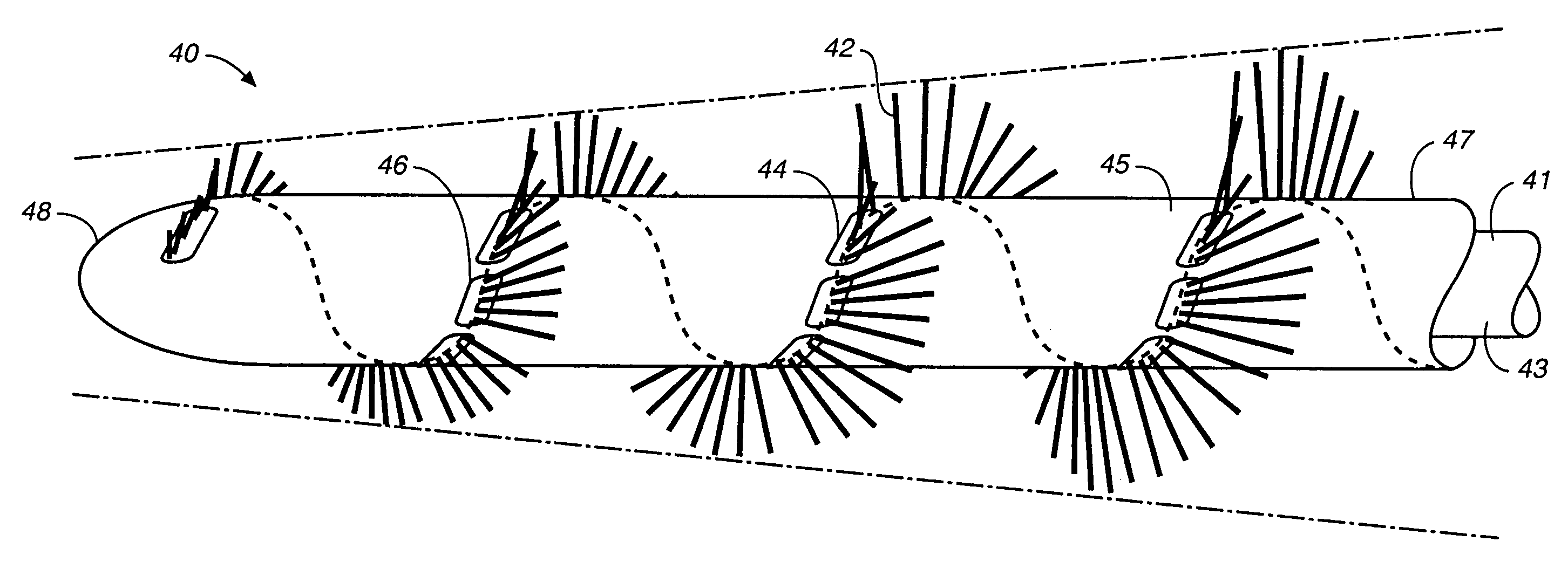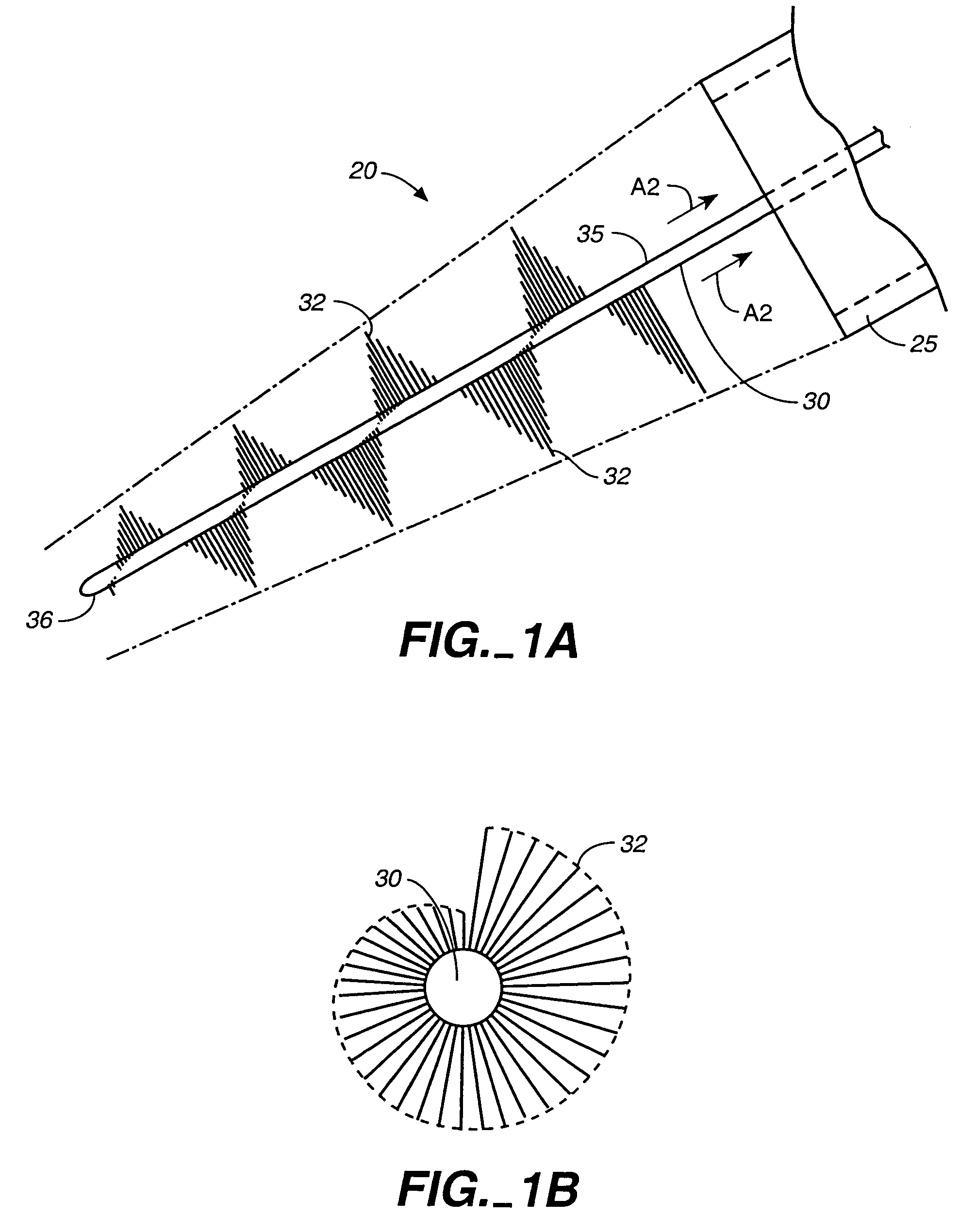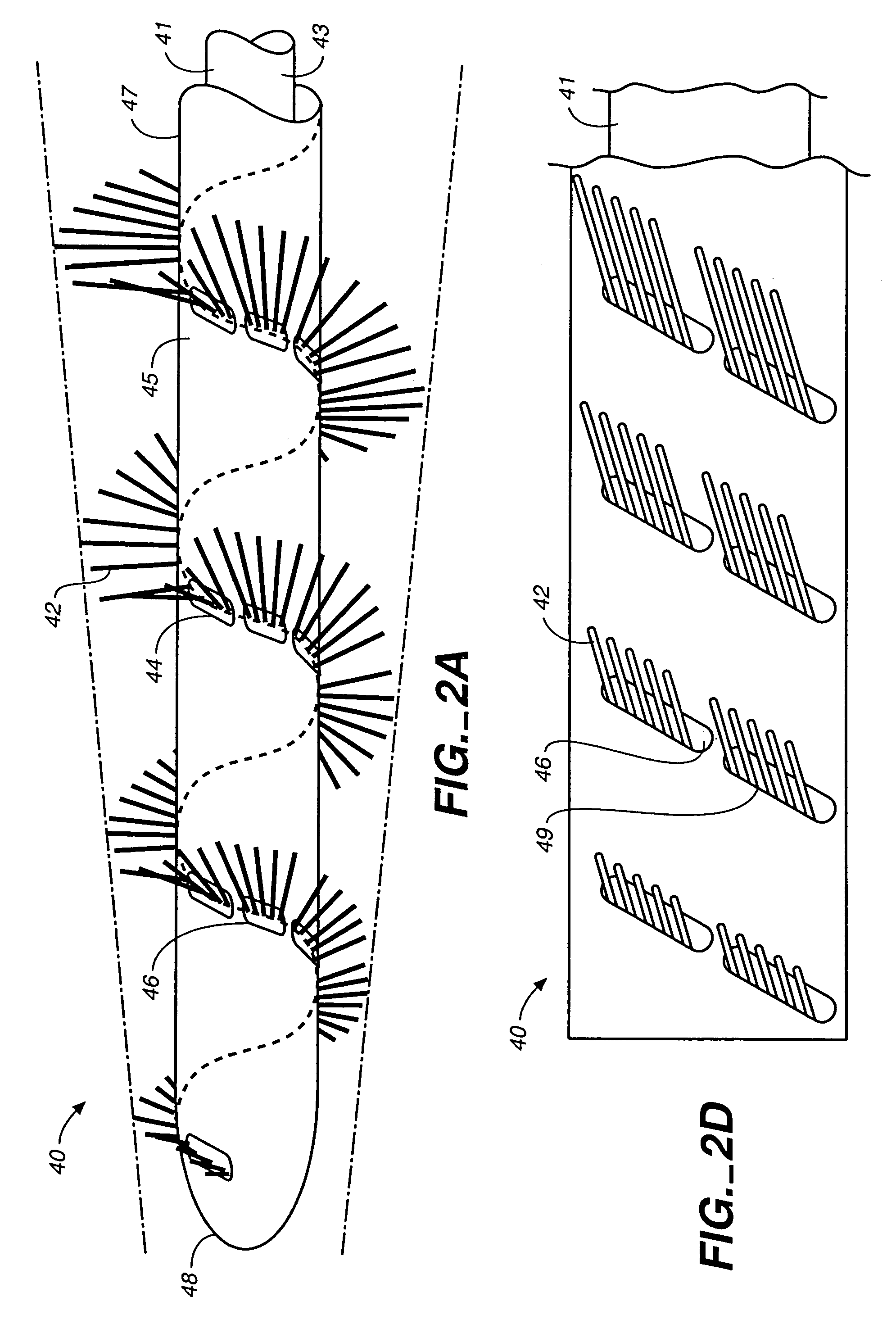Intravascular material removal device
a technology of material removal and intravascular wall, which is applied in the field of intravascular material removal device, can solve the problems of reducing the delivery profile, occlusion, further blockage, etc., and achieves the effect of low delivery profil
- Summary
- Abstract
- Description
- Claims
- Application Information
AI Technical Summary
Benefits of technology
Problems solved by technology
Method used
Image
Examples
Embodiment Construction
[0029]Referring to FIGS. 1A and 1B, an intravascular material removing device 20 is illustrated including a delivery catheter 25 and an elongate member 30 with a plurality of bristles 32 formed in a spiral arrangement along the length of the elongate member 30. The elongate member 30 is illustrated in a position extending out of a delivery catheter 25. The limits of the arc circumscribed by the bristles 32 gradually taper from a proximal portion 35 to a distal end portion 36 of the elongate member 30. When the elongate member 30 is retracted into the delivery catheter 25, the bristles 32 may flex or bend so that they fit within the delivery catheter 25. Thus the elongate member 30 is retractable into a catheter having a smaller diameter than the outer diameter of the elongate member when the bristles are not constrained.
[0030]As illustrated in FIG. 3, in use, the elongate member is delivered percutaneously through the catheter 25 to a blocked portion 71 of a vessel 70. In this parti...
PUM
 Login to View More
Login to View More Abstract
Description
Claims
Application Information
 Login to View More
Login to View More - R&D
- Intellectual Property
- Life Sciences
- Materials
- Tech Scout
- Unparalleled Data Quality
- Higher Quality Content
- 60% Fewer Hallucinations
Browse by: Latest US Patents, China's latest patents, Technical Efficacy Thesaurus, Application Domain, Technology Topic, Popular Technical Reports.
© 2025 PatSnap. All rights reserved.Legal|Privacy policy|Modern Slavery Act Transparency Statement|Sitemap|About US| Contact US: help@patsnap.com



